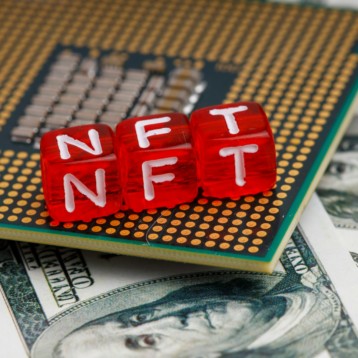
Cryptocurrencies have traditionally held a reputation for volatility, with prices changing significantly within days or even hours from their last recorded values. In 2022, this volatility reached new extremes, as the Bitcoin price fell significantly and exchanges such as Binance noted a decrease in investor interest. At its lowest point, BTC fell by over 70% compared to its previous price, a shift that has been nothing short of disastrous for many traders who have since grappled with a significant capital loss. To top it all off, several exchanges collapsed over the previous year, creating a shaky and unstable market that didn’t inspire an ounce of trustworthiness to the investors who were already on edge.
After the first few months of 2023 have ushered in a much-awaited amelioration, it remains to be seen how the market will progress. However, the investors hoping for a sudden improvement that’s massive enough to outweigh the damages of 2022 might still have a long road ahead of them.
Short-term holders
According to new data, Bitcoin might need to dip to roughly $19,000 to cool off profit-taking. While it can seem counterproductive for crypto to lose some of its value, particularly in the context of a tough year in 2022, Bitcoin short-term holders have recently become more active and begun to dictate the price resistance of Bitcoin. As the price reached the $25,000 milestone, traders that had held coins for 155 days or less started to see returns.
These measurements were captured by the MVRV metric, the market value to realized value which compares market capitalization with the value of the coins moved on-chain. These two values can be compared to assess when a price is above or below fair value, which helps determine market profitability. The value of the metric had hit a 1.2 before stalling, so a cost of approximately $19,300 would become a magnetic target for profitability and offer an incentive to not sell STHs.
In this sense, the Bitcoin market is currently navigating a transitional phase, with the long-term holder cost basis and the activities of Bitcoin whales at the end of the bear market of 2018 being some of the critical aspects. The realized price of the older supply is currently situated at $23,500. Conversely, Bitcoin’s combined realized price is below $20,000, continuing the idea that this is the area that can provide substantial and sustainable support for the market.
Stagnating prices
While 2023 showed promising results, with the first two months of the year bringing in slow but steady progress for cryptocurrencies, March has come with changes in this situation. The main concern is the troublesome situation surrounding an American bank with strong ties to the crypto community. However, this hasn’t deterred the continuous progress. However, mining companies have shown no sign of stopping their procedures or slowing down in any way. Some of them have increased production rates.
In some cases, the daily production rate increased by nearly 10% in February, despite a month-over-the-month network difficulty increase of a similar value. The difficulty markers are given by how hard it is to mine an entire Bitcoin block. Higher difficulty rates naturally require an increased hash rate and extra computing power used to create and verify new coins and approve transactions.
In February, the difficulty of mining new blocks surged to previously unseen highs of 43 trillion. Some analysts have estimated that the change has appeared in the context of the expected Bitcoin adjustment on March 10th. The next difficulty level is expected to reach nearly 44 trillion when that happens.
New changes
Bitcoin and some of the more noteworthy altcoins have recently dropped by 5% as companies and exchanges continue to distance themselves from the Silvergate fiasco. Stocks decreased by over 50% within the same U.S. trading day as clients continued to flee in the aftermath of the difficult situation that hit one of the most crypto-friendly banks in the world. While Bitcoin has somewhat recovered from the events and stagnated at a constant value, altcoins have been hit harder, and most of them have been trading in the red ever since.
The market has been digesting the issues with Silvergate ever since, and while the situation isn’t as drastic as the ones that have rocked the cryptocurrency world repeatedly in 2022, both individual and institutional investors are wary of the problem. It is complicated when you consider that it has occurred in the aftermath of a very difficult 2022, the effects of which haven’t yet been discarded wholly.
Institutions have remained skeptical, and since many have changed their investing strategy, this has resulted in higher volatility. It remains to be seen how the situation will develop, as the issues the bank is facing seem to have quite some time ahead before being resolved.
Mt. Gox
The now-defunct Mt. Gox exchange established in Shibuya, Tokyo, was launched in 2010 and then promptly closed four years later amid revelations that it had been directly involved in the theft of hundreds of millions of U.S. dollars in Bitcoin. Now, bankruptcy repayments have begun rolling in. The opinions on how these changes will affect the larger market are divided. While some are convinced that this will directly contribute, albeit minutely, to changes within the crypto environment. Others believe there are unlikely to be any changes as a result, despite the fact that the circulating supply levels will increase.
In 2014, around 850,000 coins went missing from the exchange, of which 142,000 have been recovered in Bitcoin, 143,000 in cash and 69 billion in Japanese yen. Despite these quite staggering values, that represents only 20% of the whole hack. The additional supply is unlikely to have a lasting effect and cause weaker Bitcoin prices because the early adopters are much more likely to have remained staunch crypto believers and will choose to be paid in crypto and hold on to it as a result. Any new supply that comes to the market is likely to be less concentrated as a result.
While there’s no guarantee as to the path Bitcoin will take for sure over the next few months, the future looks more promising than it did in a long time.










